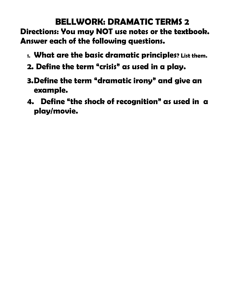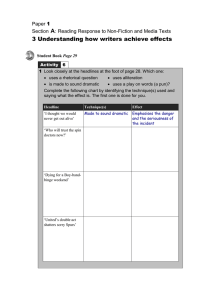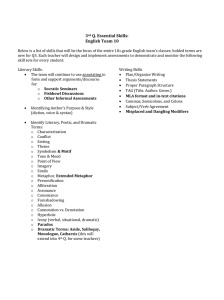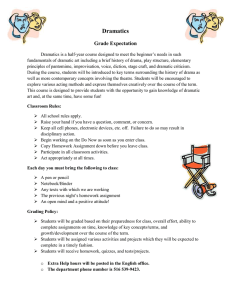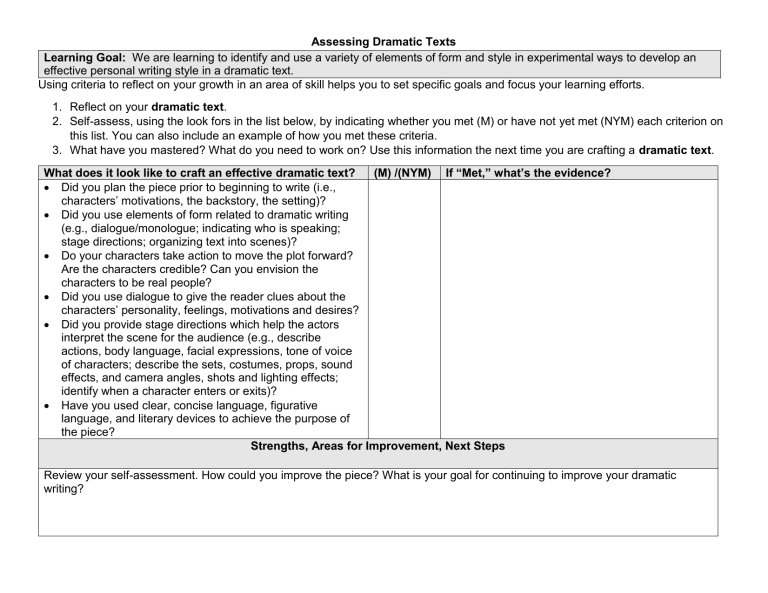
Assessing Dramatic Texts Learning Goal: We are learning to identify and use a variety of elements of form and style in experimental ways to develop an effective personal writing style in a dramatic text. Using criteria to reflect on your growth in an area of skill helps you to set specific goals and focus your learning efforts. 1. Reflect on your dramatic text. 2. Self-assess, using the look fors in the list below, by indicating whether you met (M) or have not yet met (NYM) each criterion on this list. You can also include an example of how you met these criteria. 3. What have you mastered? What do you need to work on? Use this information the next time you are crafting a dramatic text. What does it look like to craft an effective dramatic text? (M) /(NYM) If “Met,” what’s the evidence? Did you plan the piece prior to beginning to write (i.e., characters’ motivations, the backstory, the setting)? Did you use elements of form related to dramatic writing (e.g., dialogue/monologue; indicating who is speaking; stage directions; organizing text into scenes)? Do your characters take action to move the plot forward? Are the characters credible? Can you envision the characters to be real people? Did you use dialogue to give the reader clues about the characters’ personality, feelings, motivations and desires? Did you provide stage directions which help the actors interpret the scene for the audience (e.g., describe actions, body language, facial expressions, tone of voice of characters; describe the sets, costumes, props, sound effects, and camera angles, shots and lighting effects; identify when a character enters or exits)? Have you used clear, concise language, figurative language, and literary devices to achieve the purpose of the piece? Strengths, Areas for Improvement, Next Steps Review your self-assessment. How could you improve the piece? What is your goal for continuing to improve your dramatic writing?
